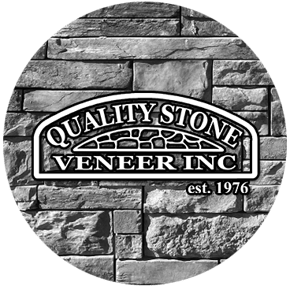It is common to encounter the opposition between brick veneer and solid brick when designing or constructing a house or upgrading it. In terms of the durability and appearance of the flooring, sheen and hard surface laminates stand out, yet in terms of the construction and the installation processes, types of LVTs, and, of course, costs, they are substantially different. This, in essence, will assist in making a positive determination on which material is well suited to a specific application. Whether planning to beautify your home or improve energy conservation, some knowledge about what brick veneer is and the difference between brick veneer and solid brick is so important.
Here, you can read more about brick veneer's advantages and drawbacks. The guide also provides information on how to install brick veneer on a house exterior and on the most appropriate size.
What Is Brick Veneer?
A brick veneer is a layer of bricks applied to the exterior or interior of a house. One of the most used solutions in construction, brick veneer is a skin rather than a major internal load-supporting structure like solid brick walls. This option has gained acceptance in current buildings since it provides the appearance of brickwork, though it is lighter and cheaper than normal bricks.
Brick veneers are usually built on a structural wall, like wooden framing, with a space in between. This gap provides better insulation and moisture control than when constructing buildings with solid bricks.
Understanding Brick Veneer vs Solid Brick
To help you have a clear choice, it is crucial to differentiate between brick veneer and solid brickwork. Here's a quick comparison:
Structure
- Brick Veneer: Non-load bearing. Suspended as one layer on a structural wall.
- Solid Brick: Load bearing. Entirely built out of bricks, and no secondary supporting walls were used.
Installation
- Brick Veneer on House: This technique is lightweight and requires less time than other search techniques. It can be used in fresh wall construction and for different types of walls.
- Solid Brick: Needs additional efforts and construction materials. It is common in older structures or projects that are considered luxurious.
Insulation
- Brick Veneer: Improved insulation, as there is a small air gap between the brick surface and the wall.
- Solid Brick: This is not as energy efficient because the wall is made of solid material with a pocket for insulation.
Maintenance
- Brick Veneer is easier to maintain. If the bricks get damaged, replacing single ones and restoring the proper look and function is no problem.
- Solid bricks are more substantial but difficult to fix if they have a defect.
Pros of Brick Veneer

There are several reasons why brick veneer on house exteriors has gained popularity. Here’s a closer look at its advantages:
- Cost-effective: It consumes less material and manpower than solid brick for construction.
- Lightweight: Brick veneer is easier to install and is more preferably used when renovations are being done.
- Flexible Design: As much as it is functional, the outcome permits different forms and tints to suit your home décor.
- Improved Insulation: Another great aspect is an air gap between the veneer and the structural wall, which provides better thermal performance.
- Low Maintenance: Of course, the peeled layer of veneer can be put back on easily enough without changing the rest of the wall.
Cons of Brick Veneer
Although brick veneer has its advantages, there are also some disadvantages.
- Not Load-Bearing: You'll still need a structural wall behind the facade.
- Moisture Concerns: If not well installed, water is likely to accumulate in the air gap.
- Durability: It is not as hard or dense as a solid brick and may crack in severe conditions.
Pros of Solid Brick
For those who are interested in longevity and traditional construction, the use of solid brick works well. Here are the key benefits:
- Long-Lasting: They are designed so solid brick walls can last centuries with little deterioration.
- Fire Resistance: Brick walls for a home are safe as they are fire resistant, thus justifying construction costs in cases of fire.
- Soundproofing: Thick walls are especially good for soundproofing, particularly if made of brick.
- Classic Aesthetic: Such brick as solid, for instance, makes the building look charming and classic and raises its cost.
Cons of Solid Brick
Despite its advantages, solid brick has its challenges:
- High Cost: The material cost is relatively higher for solid brick, and the labor cost is also high.
- Heavy Weight: Some additional weight may need the improvement of the structure's foundation.
- Limited Insulation: Nonetheless, regarding construction, homes built with solid brick walls are not very thermally efficient compared to homes with brick veneer.
Size of Brick Veneer vs Solid Brick
It is also typically smaller and lighter than bricks, making it easier to mount on walls. Standard veneer bricks are ¾ inches to 1 inch thick, while solid bricks can be as much as 3.5 inches thick.
Because brick veneer on house exteriors doesn't carry weight, thinner bricks are used for aesthetic purposes only. This is why brick veneers can be used on exterior walls as well as interior accent walls without adding a lot of unnecessary bulk.
Brick Veneer on House: Installation Tips
Brick veneer is the most popular cladding for residential construction, a sort of skin draped over the outside of a house. Proper installation is the key to the longevity and function of brick veneer. Here are some tips to ensure success:
- Prepare the Wall: Make sure the structural wall is clean and level.
- Use a Weather-Resistant Barrier: Install a moisture barrier to prevent water damage.
- Leave an Air Gap: Stuff, air gap between brick and wall.
- Install Flashing: To exclude water, flashing around windows and doors.
- Anchor the Veneer: Fasten with metal anchors into the structural wall.
Choose Quality Stone Veneer for Your Next Project
Still debating between brick veneer vs solid brick? Quality Stone Veneer (QSV) will assist you in making the best decision. Our excellent brick cladding provides the beauty of solid brick but not the weight and cost of solid brick. QSV offers expert advice, the best materials, and the most reliable installation service, and it has more than 500 years of combined experience.
We proudly cover the eastern half of the US, from the New England states to Florida and beyond. QSV is there to make your vision a reality for new construction or renovation.
Final Thoughts: Brick Veneer vs Solid Brick – Which Is Right for You?
Brick veneer is good, but solid brick is a must. Brick on house walls might be the way to go as a cheap, light building material with insulation. On the other hand, if you prefer the unmatched durability and classic charm of traditional masonry, solid brick could be the way to go.
But whether it's this or that, knowing what brick veneer is and how much it is good for you. When you need your project done right with the best materials and craftsmanship available, you can count on Quality Stone Veneer.
Ready to Get Started?
Don’t wait to upgrade your home! Browse our extensive range of brick veneers and speak to the QSV team to select the right product for your project. We've covered you, from brick veneer on house fronts to interior accents.
Call us now to arrange a consultation or to receive a free estimate. Transform your space with Quality Stone Veneer—where safety, quality, and customer service are always our top priorities!


